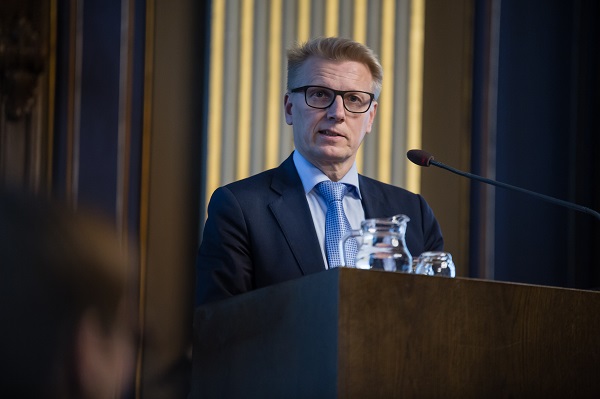Govt moves to face down HFCs
Published : 25 Mar 2017, 00:29
Minister of Agriculture and the Environment Kimmo Tiilikainen emphasised the need for facing down hydrofluorocarbons (HFCs) and expressed to measures to fulfill Finland´s commitment in this regard.
“The agreed restriction of hydrofluorocarbons was the result of extensive negotiations and signals an important step in curbing climate change. We now need the input of all countries to phase down HFCs. Finland is committed to the agreement,” Tiilikainen said, adding that the government will submit a proposal before the parliament in the spring season.
The amendments will take effect at the beginning of 2019, provided that at least 20 parties have approved them in their own procedures, said a government press release.
Finland is to adopt the agreement as part of the EU as well as in its national decision-making. On 23 March, the Government submitted a statement to Parliament, in which it supports the European Commission’s proposal for a Council Decision regarding approval of the agreement.
The international agreement reached in October 2016 on limiting the use of hydrofluorocarbons (HFCs) is moving towards national implementation. At the 28th meeting of the parties to the Montreal Protocol, held in Kigali, Ruanda, last October, countries worldwide agreed to restrict the production and consumption of HFCs.
HFC compounds became more common after the Montreal Protocol prohibited the use of ozone-depleting substances in refrigeration and air-conditioning devices. HFCs have later been found to be potent greenhouse gases that raise the temperature of the atmosphere. The inclusion of HFC restrictions in the Montreal Protocol was discussed for several years before the Kigali agreement was reached.
The curb on HFC consumption will have a major impact in terms of combatting climate change and the Paris Agreement. The amendments agreed in Kigali are estimated to reduce emissions by some 70 gigatonnes by 2050. Projections on the impact that a reduction in HFC compounds will have on the average global temperature vary depending on the speed at which people are expected to adopt new, more energy-efficient devices, especially in developing countries.
The consumption of HFCs has increased especially in developing economies. Some developed countries, including the EU, have already imposed tight restrictions on hydrofluorocarbons, seeing as environmentally friendly and energy-efficient replacement technologies exist for most purposes. Under the amendments to the Montreal Protocol, industrial countries will reduce the production and consumption of HFC compounds by 10 per cent in 2019, and gradually by 15 per cent by 2036. Developing countries are divided into two groups. The majority belong to the more ambitious group, which will freeze the use of HFCs in 2024 and gradually phase down consumption in 2029–2045. The other group will freeze consumption in 2028 and begin a gradual phase-down in 2032.
Developing countries will receive compensation for the additional costs resulting from the restrictions from the multilateral ozone fund for the implementation of the Montreal Protocol. Finland will support the launch of rapid actions in developing countries this year with additional funding of some EUR 200,000.
The Montreal Protocol, which celebrates its 30th anniversary this year, has been called the world’s most successful international environmental agreement. It has contributed to the consumption of ozone-depleting substances declining by over 98% since 1987, when the protocol was signed. The ozone layer is projected to return to its former level by 2065.


